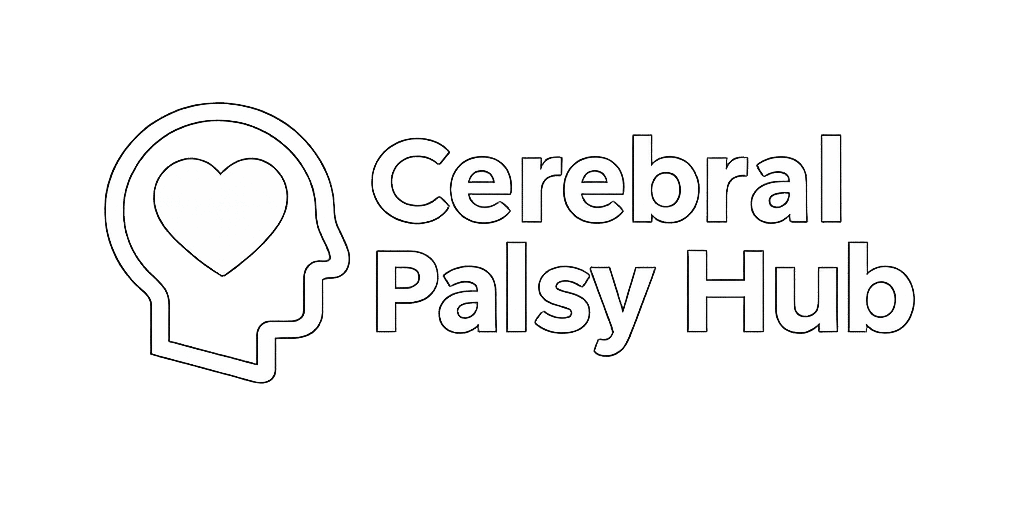Surgery for Cerebral Palsy
Surgery for cerebral palsy is used to reduce muscle tightness, correct bone deformities, and improve mobility when other treatments are not enough.
How Does Surgery Help?
Surgery helps patients with cerebral palsy reduce spasticity, correct deformities, and stabilize joints when other treatments such as physical therapy and medications are not enough. It allows children and adults to move more freely, experience less pain, and prevent long-term complications from abnormal muscle pull or bone growth.
During operation, surgeons target muscles, joints, tendons, and nerves. Surgery can help align arms, wrists, legs, hips, ankles, and feet, improving mobility and function. Surgery does not cure cerebral palsy but rather improves function and prevents deterioration of the body over time.
Surgery helps to:
- Relieve pain
- Improve posture and gait
- Improve spinal alignment (scoliosis)
- Reduce muscle stiffness (contractures)
- Improve balance and mobility
- Stabilize or reposition joints
- Prevent dislocations in hips, knees, and ankles
Many children gain more independence after surgery from improved function. They may find it easier to dress, feed themselves, and participate in school or play. Less pain and more mobility can also help them to engage more fully in therapy, recreation, and social activities.
The average lifetime cost to care for a child with cerebral palsy is over $1.6 million. Find out if your child is eligible for legal compensation. Get a free case review now.
100% free and confidential.
What Are the Types of Surgeries?
Orthopedic
Orthopedic procedures are the most common type of surgery for cerebral palsy. They focus on improving bone deformities, joint dislocations, and limb misalignment. Typical orthopedic procedures include:
- Tendon and muscle lengthening - Loosens tight muscles (e.g., Achilles tendon) to improve range of motion and reduce contractures
- Osteotomy - Helps to improve posture by realigning joints and repositioning bones. Differences in leg lengths, scoliosis, and even hip locations can be corrected with osteotomy procedures.
- Spinal surgery - Rods or fusions can help stabilize cases of severe scoliosis.
- Selective multi-level surgery - This is often performed in children with spastic diplegia for more overall improvements.
- Arthrodesis - Also known as joint fusion, this procedure fuses two or more bones together (usually in the ankle and foot) into one immobile joint to reduce stiffness, pain, and instability. This makes it easier for children to walk and balance.
Neurosurgical
Neurosurgery specifically targets spasticity at its source by operating on the brain or spinal cord.
- Selective Dorsal Rhizotomy (SDR) - This procedure involves cutting selected sensory nerve fibers with the goal of permanently reducing spasticity in the legs. It is most commonly performed in children with spastic diplegia who can already walk but are affected by stiffness. Not every child is a candidate for SDR.
Studies suggest that fewer future orthopedic interventions or injections are needed after SDR in many cases. Many patients have also reported long-term benefits (20+ years) of sustained, reduced spasticity.
Important: Selective Dorsal Rhizotomy (SDR) is an intensive operation and requires vigorous follow-up physical therapy and rehabilitation for the best possible results.
Other Surgeries for Cerebral Palsy
Children with cerebral palsy often have co-occurring conditions that affect other areas of their body. Some of these conditions can cause complications that may need surgical intervention. Other common surgeries include:
- Intrathecal Baclofen pump (ITB) - ITB involves surgically implanting a Baclofen pump into the body to deliver medication directly into spinal fluids. This helps to reduce severe spasticity. Shorter, follow-up surgeries may be needed every 5 to 7 years to replace the pump's batteries and refill medication.
- Cochlear Implants - Nearly 15% of children with cerebral palsy have hearing impairments. Cochlear implants help restore hearing loss by sending sound signals directly to the hearing nerve.
- Gastrostomy - Children with CP sometimes have issues with chewing, swallowing, and keeping food or liquids down due to acid reflux, low muscle tone, or underdeveloped muscles. A surgically implanted feeding tube can help make feeding easier and avoid aspiration (food or liquid entering the lungs).
- Epilepsy - Children who experience epilepsy as a co-occurring condition may undergo a procedure that removes a small part of brain tissue that causes seizures. This surgery is considered high-risk, but studies show that successful outcomes can significantly reduce seizures.
Does My Child Need Surgery?
Children who are ambulatory (able to walk) and non-ambulatory (unable to walk) require different types of care. The main goal of surgery for ambulatory children is to improve their ability to walk and reduce pain while doing so.
Surgery for non-ambulatory children usually involves making sure conditions like contractures, muscle stiffness, or other deformities don't get worse over time. Correcting hip dislocations and scoliosis, for example, can increase comfort and promote healthier posture while sitting.
The best way to know if surgery is needed is to consult with doctors and specialists to determine if the benefits outweigh the risks.
Here are some things to consider when deciding if cerebral palsy surgery is right for your child:
-
Generally, the best candidates for surgery typically have spastic diplegia or bilateral lower limb involvement and have the ability to — or the potential to walk.
-
Specialists will often exclude children with severe dystonia, uncontrolled seizures, or cognitive limitations.
-
Depending on the type of surgery, recovery can be intense and require long periods of physical rehabilitation. Surgery may not be viable if the child is unable to complete post-recovery therapy.
Note: Most doctors and specialists will recommend other types of treatment, such as physical therapy, mobility aids, or medications, before considering surgery.
What Are the Benefits of Surgery?
Each type of surgery has its own unique benefits. Depending on the type of procedure you choose, some benefits may include:
- Improved walking patterns, speed, and endurance
- Increased mobility and ease of movement
- Reduced spasticity, muscle stiffness, and involuntary movements - (SDR in particular is shown to have spasticity reductions that can last a lifetime)
- Improved functional motor skills and ability to perform daily activities
- Better joint alignment and posture
- Lower risks of long-term arthritis or chronic pain
- Increased overall quality of life
Quick Fact: Studies show the biggest long-term gains come not just from the surgery itself but from intensive post-op rehabilitation. Children whose families actively participate in therapy see greater improvements than those who rely on surgery alone.
What Are the Risks of Surgery?
When Should My Child Get Surgery?
The timing of surgery is critical because a child's body changes rapidly with growth. As children develop, it becomes easier to spot which movement problems may be a primary concern.
Operating too early can open up unnecessary risk without addressing the root cause and may provide little long-term benefit. However, delaying surgery can potentially allow abnormal posture or joint alignment to become fixed, which makes surgery more complicated, risky, and sometimes less effective.
A recent study from Jordan showed that children with spastic cerebral palsy who underwent selective dorsal rhizotomy (SDR). The researchers found that nearly half of the children under age 10 improved their GMFCS level (increased their functional mobility) within 12 months of surgery, while none of the children over 10 showed the same improvement.
This shows that younger children may have a greater “window of opportunity” for meaningful functional mobility gains after a surgery like SDR.
Since every child's situation is unique, an experienced surgical specialist can guide you through the optimal timelines of surgery needed for your child.
What Is the Recovery Process After Surgery?
Depending on the type of surgery, post-op rehabilitation can be long and intensive. Physical therapy, medications, and mobility aids may be needed during recovery. Some children may also need to relearn how to walk, which can take several months.
Common activities and routines during post-op recovery may involve:
-
Daily physiotherapy for weeks or even months
-
Using adaptive equipment for movement training
-
Regular follow-ups with doctors and therapists to track healing and surgical outcomes
-
Adjusting school and home routines during recovery
- Taking prescription medication such as painkillers
Many cases of cerebral palsy are caused by preventable birth injuries. If you think your child's CP was due to medical negligence, contact us now and get a free case review at zero cost.
Case reviews are 100% free.
I understand by submitting this form that I am providing my consent to be contacted by Cerebral Palsy Hub and its legal partners, potentially using automated technology, at the number provided regarding my potential claim/their services. Consent is not required to use their services. Msg frequency varies, and message and data rates may apply. Reply HELP for help or STOP to unsubscribe. SMS Terms of Service. I understand and agree that by submitting this form I agree to the Privacy Policy and Terms of Use and that this form does not create an attorney-client relationship and is not confidential or privileged and may be shared.
Surgery for Cerebral Palsy FAQs
 Written and Medically Reviewed by:
Written and Medically Reviewed by:
Cerebral Palsy Hub Team
Cerebral Palsy Hub was founded to help support children and their families with cerebral palsy and to create a safe space for those affected. We strive to provide the most accurate, up-to-date information, and tools to help give your child the life they deserve.
Last Updated: October 2, 2025
Need Legal Help?
Our team of legal experts can help answer your questions.
Our team of legal experts can help answer your questions.
